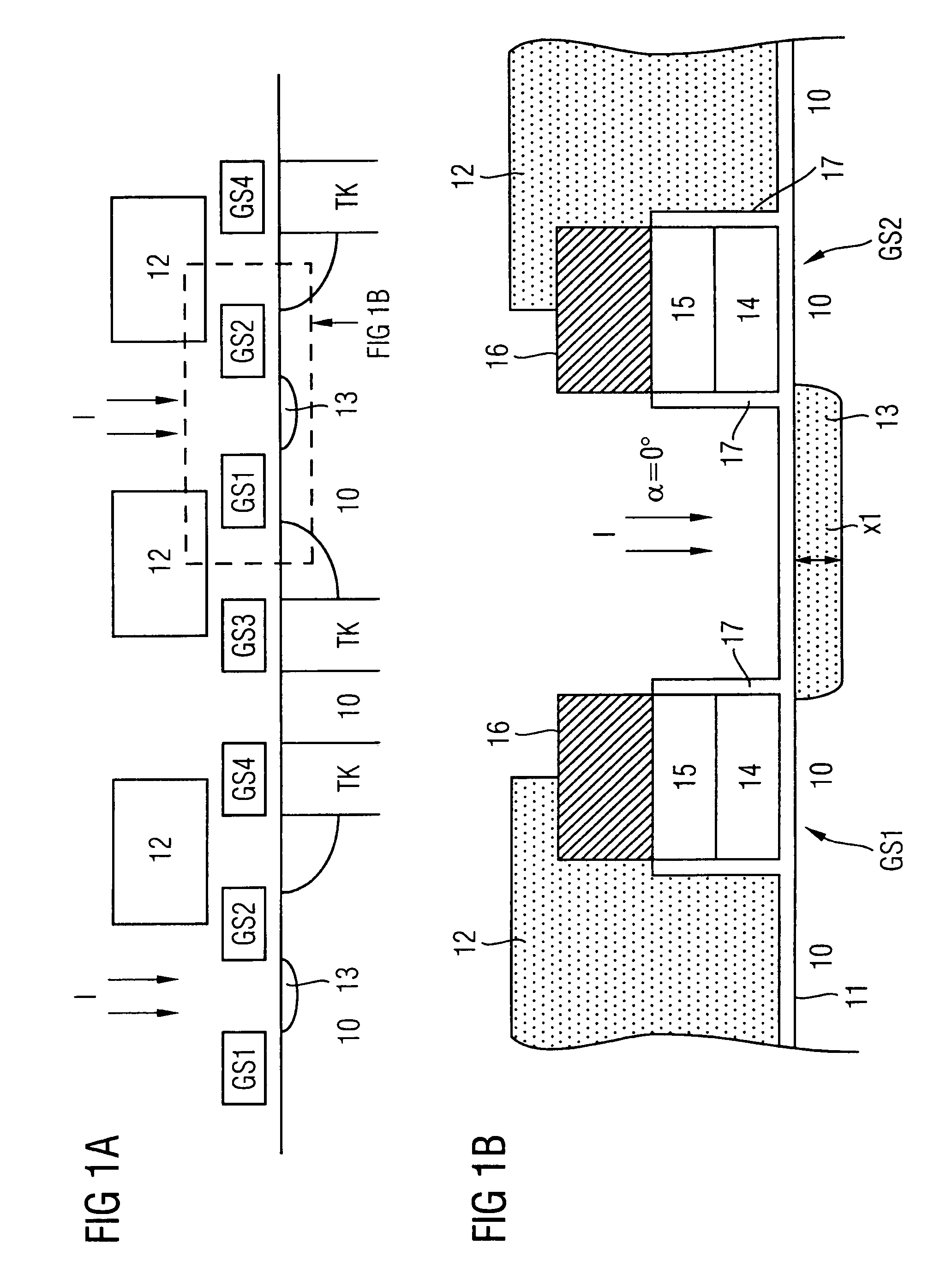Method for fabricating a semiconductor structure
- Summary
- Abstract
- Description
- Claims
- Application Information
AI Technical Summary
Benefits of technology
Problems solved by technology
Method used
Image
Examples
Embodiment Construction
[0035]In the figures, identical reference symbols designate identical or functionally identical constituent parts.
[0036]FIG. 1A diagrammatically illustrates a cross section of a DRAM semiconductor structure in a larger detail. A plurality of gate stacks GS1, GS2, GS3 and GS4 are arranged, preferably equidistantly, on a semiconductor substrate 10, a storage capacitor TK for storing an information item, i.e. an electrical charge, being arranged below every third or first gate stack GS3, GS4 in a cross-sectional plane. The gate stacks GS1 to GS4 are preferably patterned identically, provided in a plurality and are described in more detail with reference to FIG. 1B. A mask 12 is illustrated diagrammatically above the interspace between the gate stack GS3 and GS1 and between GS2 and GS4, so that the region between the gate stack GS1 and the gate stack GS2 is not covered by the mask 12 and an implantation I can be effected there, so that a section 13 provided with a doping is formed in th...
PUM
 Login to View More
Login to View More Abstract
Description
Claims
Application Information
 Login to View More
Login to View More - R&D
- Intellectual Property
- Life Sciences
- Materials
- Tech Scout
- Unparalleled Data Quality
- Higher Quality Content
- 60% Fewer Hallucinations
Browse by: Latest US Patents, China's latest patents, Technical Efficacy Thesaurus, Application Domain, Technology Topic, Popular Technical Reports.
© 2025 PatSnap. All rights reserved.Legal|Privacy policy|Modern Slavery Act Transparency Statement|Sitemap|About US| Contact US: help@patsnap.com



